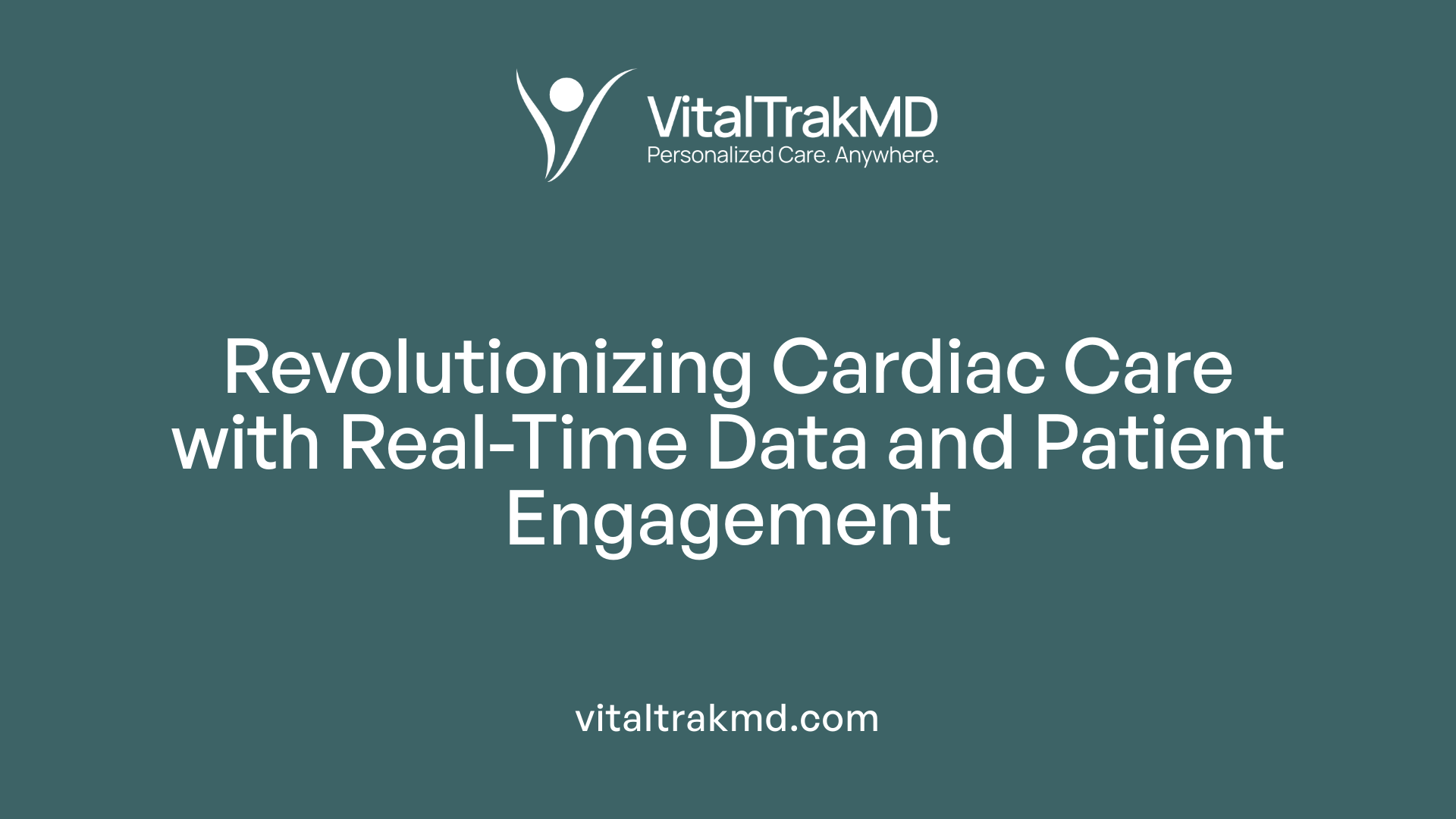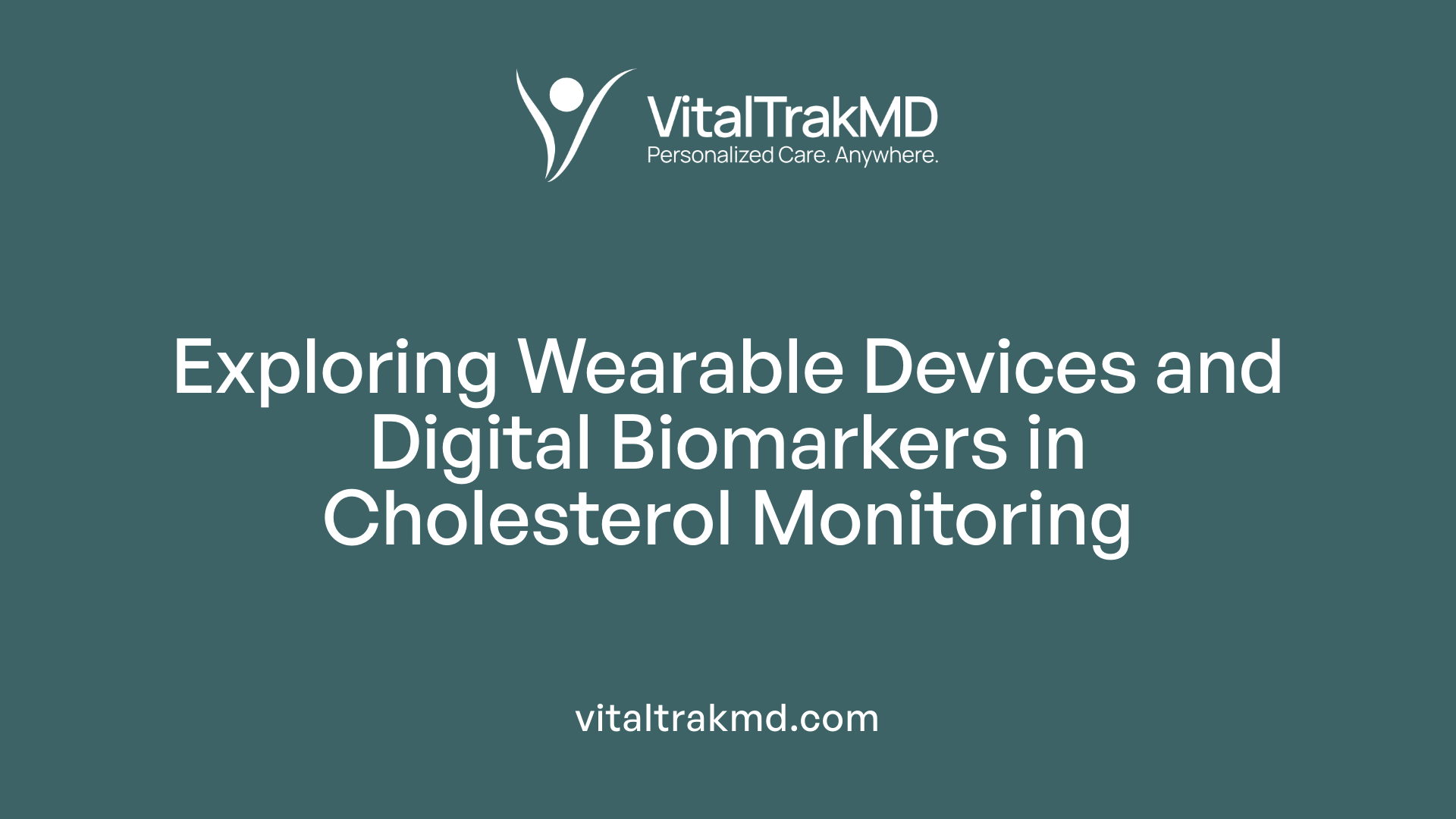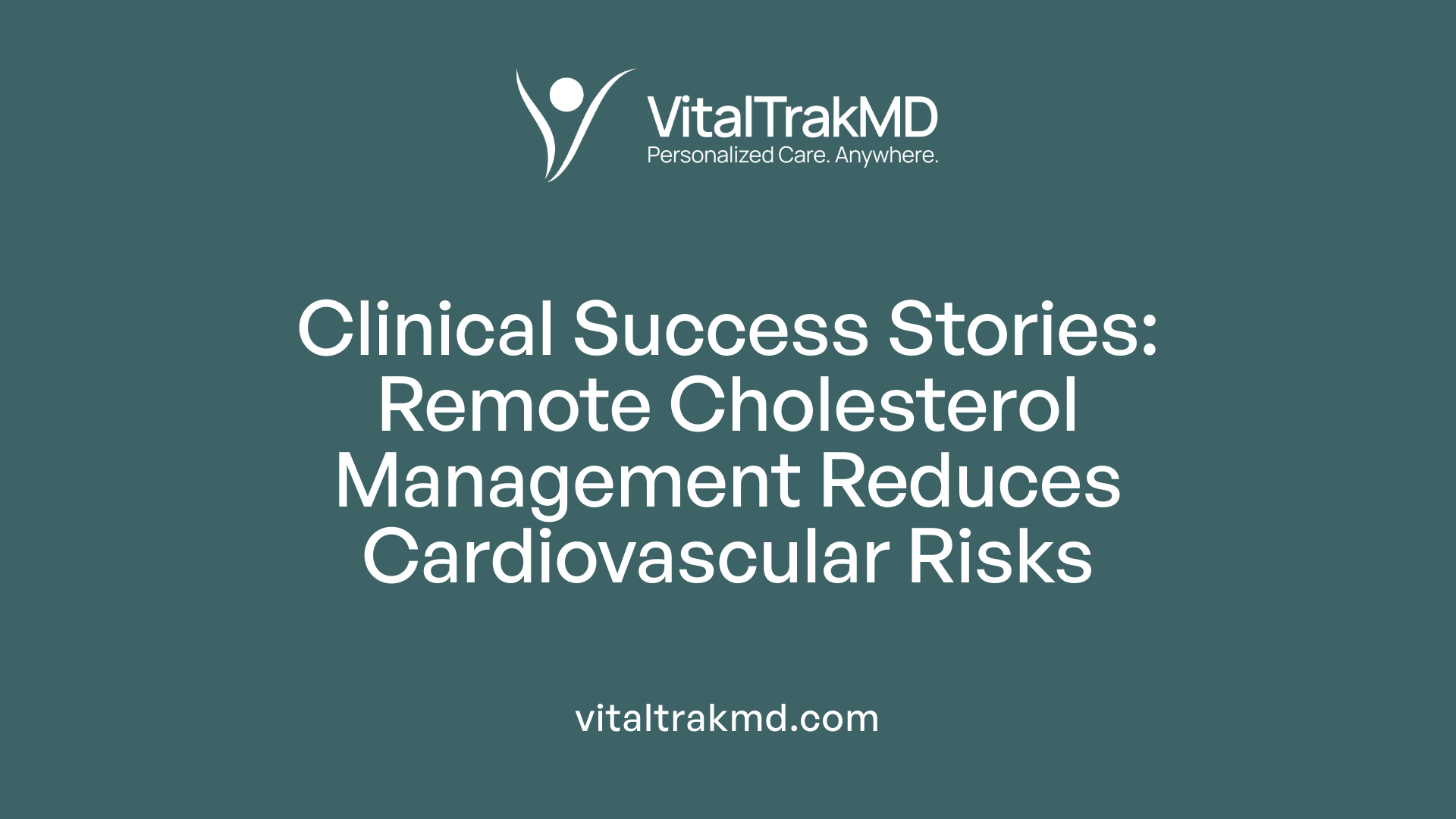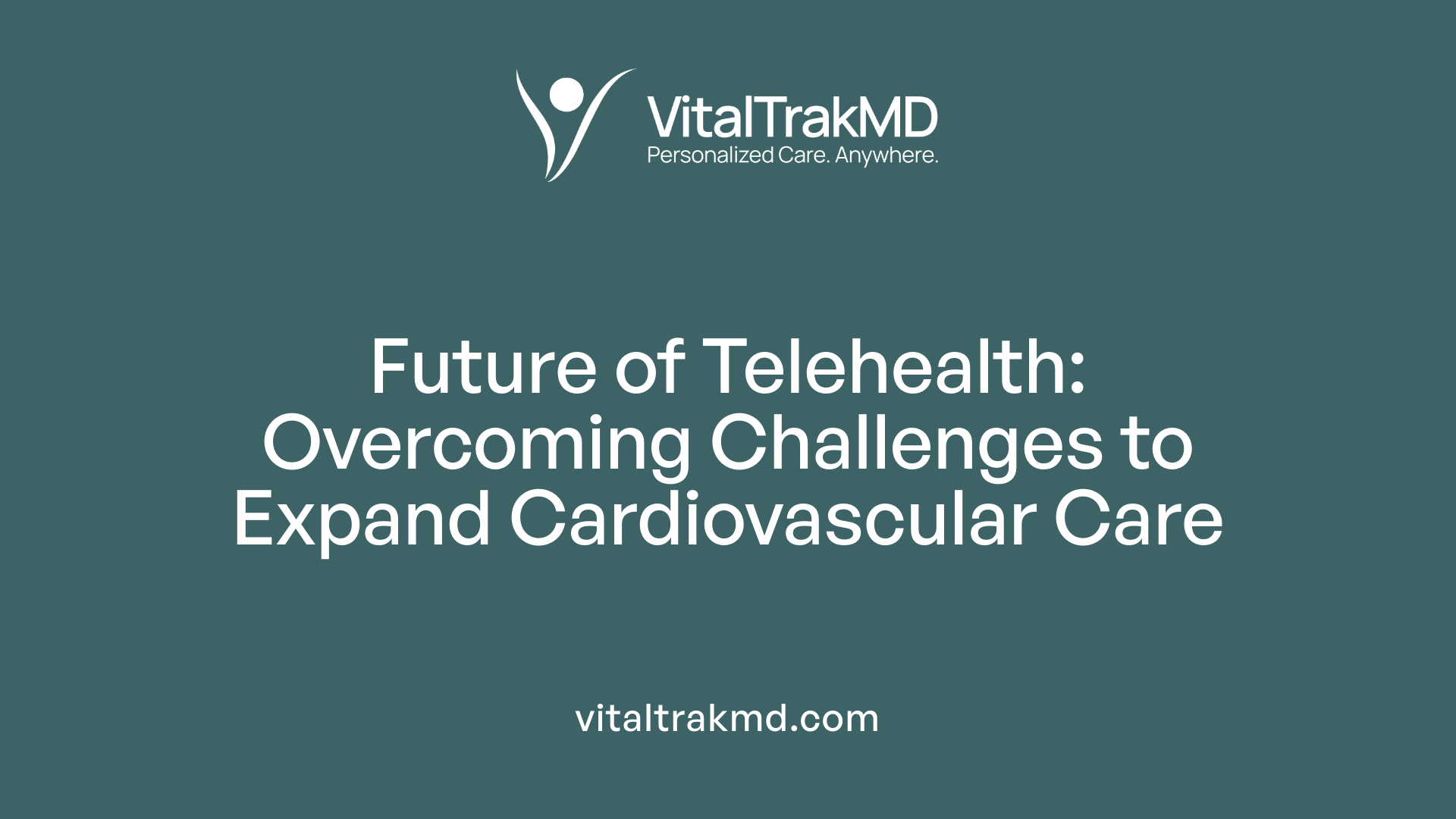Managing High Cholesterol Through Remote Health Tracking

Transforming High Cholesterol Management in the Digital Age
The advent of remote health tracking and digital monitoring technologies is reshaping how high cholesterol and associated cardiovascular risks are managed. With evidence-based programs demonstrating significant improvements in lipid profiles and blood pressure control, healthcare providers are increasingly embracing remote strategies that offer accessible, efficient, and personalized care. This article explores the various digital tools, remote monitoring methods, and clinical evidence underpinning their effectiveness, as well as future prospects and challenges for widespread adoption.
The Power of Remote Monitoring in Cardiovascular Health
 Remote health care monitoring has revolutionized how medical professionals track and manage cardiovascular risks, especially high blood pressure and cholesterol. Using cellular and Bluetooth-enabled devices, patients can now transmit vital signs and health updates directly to their healthcare providers in real time. This technological progress allows for continuous, efficient, and accessible disease management outside traditional clinical settings.
Remote health care monitoring has revolutionized how medical professionals track and manage cardiovascular risks, especially high blood pressure and cholesterol. Using cellular and Bluetooth-enabled devices, patients can now transmit vital signs and health updates directly to their healthcare providers in real time. This technological progress allows for continuous, efficient, and accessible disease management outside traditional clinical settings.
One significant advantage of these innovations is the ability to send real-time data instantly. For example, patients using digitally connected blood pressure cuffs automatically upload readings to monitoring platforms, allowing clinicians to observe trends and make timely treatment adjustments. This instant communication fosters a proactive approach to managing conditions like hypertension and high cholesterol, ultimately reducing the likelihood of serious complications.
A comprehensive study involving over 10,000 patients from Mass General Brigham highlights the effectiveness of remote monitoring programs. This large-scale research demonstrated that patients' blood pressure and LDL cholesterol levels significantly improved through remote intervention. Over six and twelve months, associated reductions of approximately 9.7 mmHg systolic and 5.2 mmHg diastolic blood pressure were observed among participants undergoing medication titration driven by pharmacists and digital data. Similarly, LDL cholesterol levels decreased by about 37 mg/dL, contributing to lower cardiovascular risk.
The process involves more than just data collection. Patients receive guidance through education and support tools, combined with medication management protocols overseen by advanced practice pharmacists. These protocols are based on clinical guidelines and utilize automation software to optimize care. Notably, even diverse populations—including non-white and multilingual patients—benefited equally, with data indicating improved blood pressure and cholesterol levels across all groups.
Remote medication titration management proved to be particularly effective. Patients actively engaged in treating their conditions remotely experienced notable health gains. For example, at six months, the reduction in systolic blood pressure was about 8.7 mmHg, with similar improvements seen in cholesterol levels. These outcomes underscore that remote systems can closely mimic, or even enhance, traditional in-person care by providing timely, guideline-based treatment adjustments.
Furthermore, this approach reduces the need for frequent in-office visits, making cardiovascular care more accessible and convenient. It is especially impactful for populations with limited access to healthcare, such as those living in rural areas or with mobility challenges. As a result, remote monitoring contributes to narrowing health disparities and increasing overall healthcare quality.
The application of digital tools extends beyond conventional monitoring devices. Educational apps provide lifestyle guidance, dietary recommendations, and motivational content to support healthy habits. Interactive platforms and virtual support groups help patients understand their health and stay motivated through shared experiences.
In terms of technology, various digital solutions have been adopted, such as mobile health applications, wearable devices, and telehealth platforms. These tools facilitate ongoing management for conditions like high cholesterol and hypertension, ensuring consistent medication adherence, lifestyle modifications, and early detection of potential issues.
The integration of remote data collection with clinical workflows plays a vital role in large-scale health initiatives. Data from connected devices are securely transmitted and stored, enabling healthcare teams to analyze trends and intervene early if necessary. This continuous monitoring helps catch adverse health changes before they escalate, reducing emergency visits and hospital admissions.
Educational content available via digital platforms also empowers patients to learn about risk factors, medication routines, and dietary strategies for managing high cholesterol. For example, apps like Heart & Stroke Helper by the American Heart Association provide tracking tools for LDL levels and offer personalized tips to improve diet and medication adherence.
Remote health strategies also involve interdisciplinary collaboration. Pharmacists, nurses, and care navigators work together using standardized algorithms and automation to titrate medications effectively. This team-based approach ensures guidelines are adhered to and that each patient receives individualized care, regardless of their location.
Remote monitoring's success is evident in its ability to improve clinical outcomes across diverse patient groups. Large studies show that participants achieved LDL cholesterol reductions of approximately 35-37 mg/dL and blood pressure drops of around 8-9 mmHg systolic, translating into a considerable decrease in cardiovascular risk.
The benefits of these technologies extend further into developing comprehensive care models that include routine data collection, personalized feedback, and ongoing education. As telehealth and remote monitoring continue to evolve, they promise to further enhance the management of hyperlipidemia, hypertension, and other cardiovascular conditions.
In summary, leveraging cellular and Bluetooth-enabled devices for remote health care significantly boosts the ability to control blood pressure and cholesterol levels. The combination of real-time data transmission, automation, and patient engagement creates a powerful system that promotes early intervention, personalized care, and improved health outcomes. As digital health technology expands, its potential to reduce healthcare disparities and improve quality of life becomes increasingly evident, supporting a future where remote monitoring is a standard component of cardiovascular care.
Advanced Technologies Powering Telehealth and Remote Monitoring

How do wearable devices and digital biomarkers contribute to cholesterol monitoring?
Wearable devices and digital biomarkers are transforming cholesterol management by enabling continuous, non-invasive assessment of lipid levels. Innovative sensors, such as hydrogel-based electrochemical biosensors and smart contact lenses, can detect cholesterol directly from the skin or tear fluid. These devices eliminate the need for traditional blood draws, offering a more comfortable and practical approach to monitoring.
Using wireless communication technologies, these devices transmit cholesterol data in real time to smartphones or centralized health systems. This immediate data sharing allows for prompt clinical decision-making and ongoing health management without frequent clinic visits.
Validation studies have shown a strong correlation between non-invasive biomarkers in skin or tears and blood cholesterol levels, supporting their reliability and clinical utility. These advancements enable patients to monitor their cholesterol levels more conveniently and frequently, leading to better adherence to treatment plans and earlier detection of lipid abnormalities.
Overall, wearable sensors and digital biomarkers facilitate continuous, accurate, and user-friendly cholesterol monitoring, which is especially important for managing cardiovascular and metabolic diseases.
Clinical Evidence Supporting Remote Cholesterol Management

What are the benefits and clinical evidence supporting remote management of high cholesterol?
Implementing remote management strategies for high cholesterol has proven to be highly beneficial in improving patient care and health outcomes. These programs leverage digital health technologies such as at-home blood pressure monitors, laboratory testing, and patient portals to facilitate continuous monitoring and personalized treatment adjustments.
A landmark large-scale study involving over 10,000 patients across diverse populations demonstrated that remote cholesterol management significantly lowers LDL cholesterol levels. Participants experienced an average reduction of approximately 37.5 mg/dL at 12 months, reflecting a substantial achievement in lipid control. This level of decrease is associated with a marked reduction in cardiovascular risk, underscoring the importance of consistent LDL-C monitoring and management.
Beyond lipid levels, these programs also contribute to blood pressure improvements, which further reduces cardiovascular risk factors. The multidisciplinary care teams, including pharmacists and nonlicensed navigators, utilize real-time data to adjust medications promptly and tailor lifestyle interventions, leading to better treatment adherence and patient engagement.
The studies highlight that remote cholesterol management is effective across various racial, ethnic, and language groups, promoting equitable access to care. Materials translated into multiple languages and culturally sensitive outreach minimize barriers, ensuring all patients can benefit from this approach. The durability of the results indicates that these interventions can be sustained long-term, with many patients reaching and maintaining LDL-C targets.
Crucially, the evidence aligns with current clinical guidelines that emphasize LDL cholesterol as a primary target for reducing cardiovascular events. The integration of digital tools and lab reporting supports timely responses to changing health metrics, enabling both preventive and reactive care.
Overall, clinical research affirms that remote cholesterol management is a safe, scalable, and effective strategy. It not only improves lipid control but also enhances patient engagement, reduces health disparities, and supports personalized, guideline-based therapy. As digital health continues to evolve, such programs are poised to become a standard component in comprehensive cardiovascular care.
| Study Population | LDL-C Reduction (mg/dL at 12 months) | Blood Pressure Improvement | Diversity Aspects |
|---|---|---|---|
| Over 10,000 patients | ~37.5 mg/dL | Significant across racial, ethnic, and language groups | Achieved with multilingual materials and culturally sensitive approaches |
| 10,803 adults | ~37 mg/dL | Improved in various subgroups | Demonstrates universal applicability |
| 18,444 patients | ~37 mg/dL | Enhanced control | All populations benefited regardless of background |
This compelling evidence underscores the potential of remote management programs to transform cardiovascular risk reduction, emphasizing their role in modern healthcare.
Strategic Outlook and Overcoming Barriers in Telehealth Adoption

What are the future prospects, challenges, and facilitators of telehealth solutions for cholesterol management?
The advancement of telehealth solutions presents considerable potential to transform cholesterol management and broader cardiovascular care. The future of these digital health initiatives points toward integrated, hybrid models that combine remote patient monitoring (RPM) with traditional in-person visits. Such models enable continuous tracking of lipid levels and other health metrics through user-friendly, connected devices like blood pressure cuffs, glucometers, and digital lipid panels.
These innovations promote proactive care by providing real-time data to healthcare providers, facilitating timely medication adjustments and lifestyle recommendations. As technology evolves, the development of more sophisticated algorithms and AI-powered analytics can enhance personalized treatment plans, potentially improving adherence and outcomes.
Facilitators driving this growth include multidisciplinary collaboration among clinicians, technology developers, and policymakers. Patient-centered digital programs that emphasize ease of use and cultural sensitivity will boost engagement among diverse populations. Additionally, increased funding and policy support from government agencies and insurance providers are crucial to expanding coverage and integrating telehealth into standard care.
Despite these promising prospects, several challenges remain. Technological barriers such as limited digital literacy and unreliable internet access can hinder widespread adoption, particularly in underserved or rural communities. Systemic issues like inconsistent reimbursement policies pose financial hurdles for healthcare providers, reducing incentives to invest in telehealth infrastructure.
Clinician-related challenges include standardizing care protocols and ensuring adequate training in digital health tools. Data security and patient privacy concerns also need to be addressed to foster trust and compliance.
Addressing these barriers requires comprehensive policy reforms aimed at incentivizing telehealth, expanding broadband infrastructure, and enhancing digital literacy programs. Infrastructure investments should prioritize equitable access, ensuring that vulnerable populations benefit from these innovations.
Training and support for clinicians are essential to implement standardized, effective telehealth interventions for hyperlipidemia management. Regulatory frameworks must evolve to provide clear guidelines and reimbursements aligned with technological capabilities.
In conclusion, leveraging technological advances and establishing robust policies will be vital for sustainable telehealth integration. These efforts will help reduce disparities, improve cardiovascular risk management, and potentially lower healthcare costs over time.
The Future of Heart Health in a Digital World
As technological innovations continue to evolve, remote health tracking stands at the forefront of cardiovascular care, offering powerful tools to manage high cholesterol effectively. Large-scale clinical evidence supports its safety, efficacy, and capacity to bridge healthcare disparities. While challenges persist, ongoing policy reforms, technological improvements, and a focus on equitable access promise to expand the reach and impact of remote cholesterol management. As we look ahead, integrating digital biomarkers, wearable sensors, and telehealth platforms will be essential for proactive, personalized, and effective management of cardiovascular risk factors, ultimately transforming heart health for diverse populations worldwide.
References
- Study Shows Remote Patient Monitoring Improves Blood Pressure ...
- Results of a Remotely Delivered Hypertension and Lipid Program in ...
- Mass General Brigham Remote Healthcare Delivery Program ...
- Remote BP, cholesterol management program may optimize ...
- Remote BP and LDL-C Monitoring Programs Promote Successful ...
- Telehealth Interventions to Improve Chronic Disease - CDC
- 5 Reasons to Embrace Remote Patient Management for Your Heart ...
Recent articles
Want to Feel Better and Live Healthier?
Join hundreds of patients taking control of their health with personalized care that fits their life – not the other way around.
Rated 4.8/5 by 32+ customers







